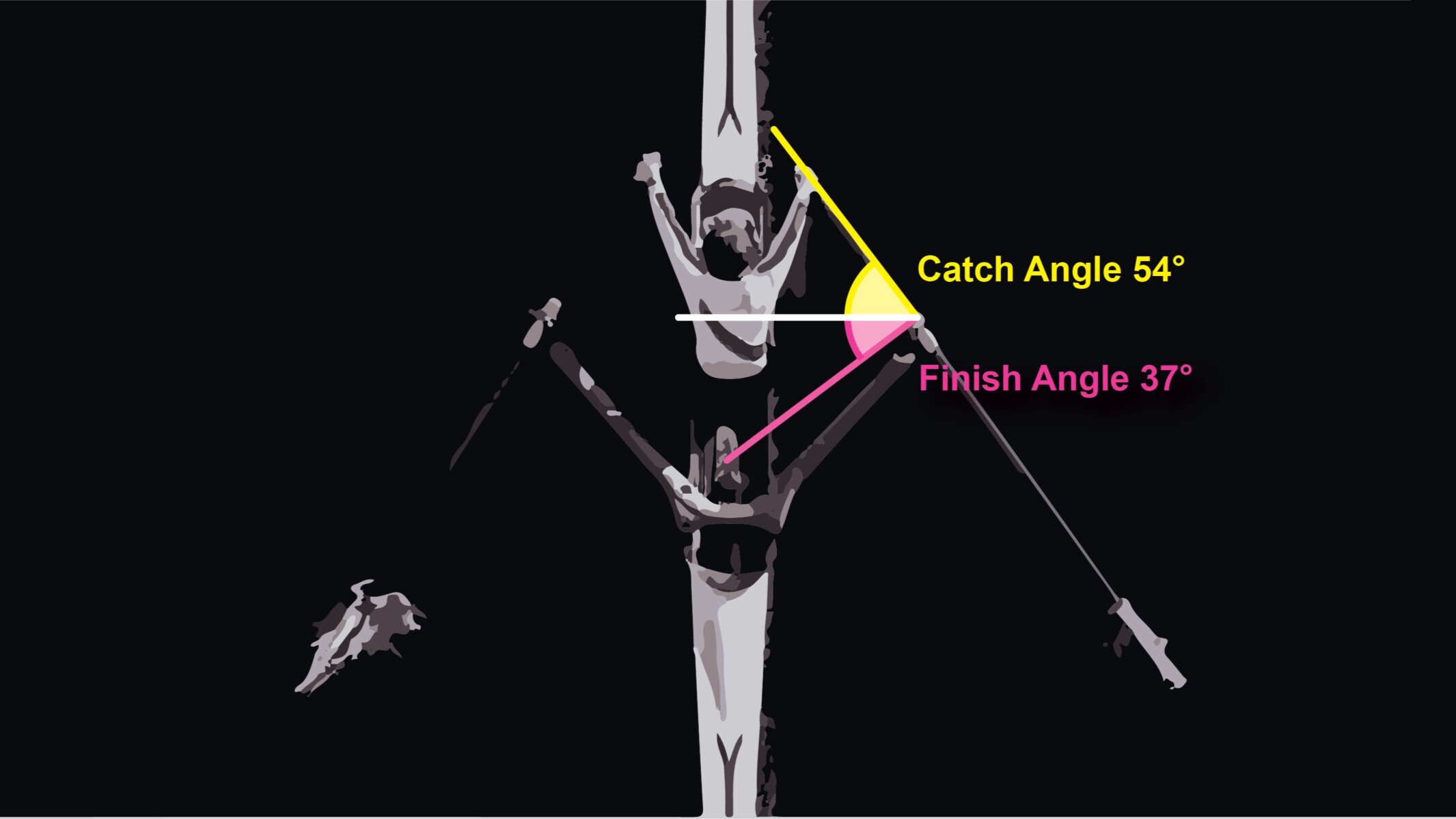Catch and Finish Angles, Why and How to Set Them
John Thornell
by John Thornell, Grok Rowing Founder, Stonington Crew Girls Head Coach
In a recent USRowing webinar, Yale coach Steve Gladstone was asked a question about the first thing he identifies when looking at his crews. The legendary coach responded, “I make sure the catch angles are uniform. Then, I look to see when the blades release from the water. I want people to be in the water the same length of time.”
Why are catch and finish angles important?
Positioning athletes, so they can reach optimal catch and finish angles, will help them row comfortably and efficiently, and allow them to perform to their potential.
If the finish angle is too small and catch angle too large, a rower (positioned too far to stern, in this example) may have difficulty getting their blade out of the water at the finish. They may also feel like the load is too heavy at the catch. This may be difficult for some rowers and could even lead to injury.
According to long-time Canadian coach and now coach developer, Mike Purcer, the catch and finish angles also affect blade efficiency in the water, in the form of blade slip. “The best catch and finish angle will maximize the effective stroke length and minimize slippage,” says Purcer. “A 15 cm positive blade slip in sculling and a 20 cm negative blade slip in sweep rowing are generally acceptable.” Blade slip can be determined by a simple video analysis.
For crews, all athletes should have similar catch angles and similar finish angles. Purcer adds, “Ideally, the same percentage of catch to finish angles will ensure oars reach the perpendicular together.” This helps athletes match one another and have the same peak power application during the stroke.
Think of the catch and finish angles as margins. If a rower goes outside the margins, move their foot stretchers to bow or stern to position them between the optimal angles. (Span/spread can also be used, but this is a topic for another day).
Recommended catch and finish angles vary by crew size, boat class, span/spread, gearing, and other factors. Generally, it’s accepted that the stroke arc in sweep rowing should be 90° (catch angle of 57°, finish angle of 33°, for example). In sculling, the arc is closer to 110° (catch angle of 65°, finish angle of 45°). Several resources are available online and in print that can be a good starting point.
How do you set catch and finish angles?
Measuring these angles can be a little tricky. Many coaches don’t even try. Others have drawn angles on foam board then tried to position it perpendicular to the hull. Some have measured set distances from the pin to a centerline based on trigonometry tables. Monitoring tools mounted to oarlocks are relatively new but can get expensive.
Almost out of necessity, we created a simple, affordable angle measurement tool. Just loop a rigger line on the oarlock pin and pull it across the protractor-like face of the tool to the desired angle. Then, mark the catch and finish angles on the gunwale.
The markings (often brightly colored tape) help coaches determine if athletes are reaching the angles or not. The oar shaft should be positioned directly over the markings at each end of the stroke. Be sure to affix the tape to the stern of the desired angle to account for the offset between the pin to the center of the oar shaft. This can be about 3 cm in both sculling and sweep rowing.
Recording a video for slow-motion playback can help coaches see the position of oars over the markings. If you’re lucky, you may have a bridge from which you can record overhead footage. If you’re really lucky, you can get an overhead video with a drone!
Angles aren’t absolutes!
What works for a national team crew may not work for your program. Recommended angles are a starting point and should be adjusted to the size and speed of your crews. Experiment to determine the optimal angles for your rowers. Which position are they most comfortable? Which position do they match one another? Which position enables them to row to their potential?




